
Vilar Cath is a device that allows patients of incontinence and urinary retention control urine output through a unique system. It does not require surgery or cuts since it is manufactured with hypoallergenic silicone and materials which are malleable, resistant to heat, water, and action of oxidizing agents. The catheter is applied by doctors in an outpatient clinic within just a few minutes and it remains in the body for up to two months. Vilar Cath returns to women the right to have a full and limitless routine since it promotes improvement in all quality of life indicators by up to 80% and it is suitable for children, adults and the elderly, with excellent acceptance by wheelchair users.
The upper end of the catheter, introduced into the base of the bladder, contains seven holes which have been designed to drain urine.
The upper disc is fixed, being malleable, and it seals the urine pass out of the catheter.
The probe body has variable sizes to adapt to the patient.
The lower, mobile and malleable disc is adjusted to the output of the urethra.
The lower end of the catheter has a cap attached to an ultrasound connector, through which the patient controls the output of the urine.









* Compared with clean intermittent catheterization, according to research registered under the number 33116814.9.0000.5208 in the National Research Ethics Commission of Brazil
Since it is made of medical grade silicone, the occurrence of allergies is almost non-existent. In our study, before the samples from 90 patients using Vilar Cath, we did not observe any reaction to indicate such kind of immune reaction. In surgical practice, faced with the evidence of latex allergy, all used materials are replaced by silicone which is comparable to the one used in Vilar Cath.
In an emergency case, patients surely can remove the catheter, since the procedure is simple, fast and almost painless (from the previously collected reports).
Yes, since it is a secure mechanism that simulates physiological vesical emptying, reducing episodes of urinary tract infection (UTI).
Usually, patients already have a behavioral education in relation to the time of liquid intake and the necessary moment to perform vesical emptying. Time is variable according to such intake. However, whenever this process is "delayed", there will be a small leakage of urine around the catheter, explained by the fact that the liquid medium exceeds non-hermetically sealed barriers. It is an alert signal for the catheter to be manipulated.
In cases of breakup or fragmentation, it is removed through the aid of tweezers and replaced by a new one. Moreover, in extreme cases, in which the probe can slide into the bladder, it must be removed in a surgical room through the ministration of cystoscopy.
So far, no injury has been observed in the inner mucosa of urethra or vulva.
In case the patient does not return within the appropriate period for exchange, since it is a foreign object in the body, there may be calcified points near the proximal end of the catheter. However, this possibility does not apply to all patients. In general, there will be a modification in terms of color and flexibility of the catheter which happens due to the prolonged contact with urine acidity.
Urinary incontinence is the involuntary loss of urine by the urethra. It can be caused by varying pathological processes and it may be presented in the following types:
Treatments vary according to the cause and type of incontinence. Treatments may be ministered by medication, surgical intervention, and physical-therapy rehabilitation. However, whenever existing treatments fail, there are alternatives that ensure certain well-being to patients, such as: the use of diapers, sanitary pads, special underwear and external urine collectors.